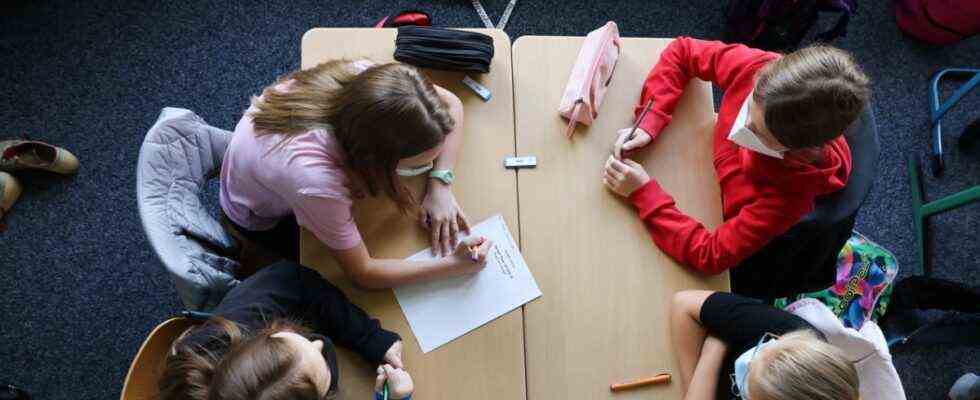What must politicians do in order to meet their responsibility for children and young people, even with high and very high numbers of infections: keep schools open? Close the schools? As clear as the position of the federal and state governments is now – open schools as long as possible – the question is controversial in many families and teachers’ rooms, but also among doctors. At the weekend, a heated debate sparked off a series of tweets from the Thuringian Ministry of Education. In it, the ministry not only listed reasons for open schools, but also claimed that it was “not clear” whether children could get Long-Covid. After violent opposition, not only was the tweet deleted, but a state secretary was also dismissed.
On Tuesday the Standing Conference (KMK) published a studywhich is unlikely to end the still heated debates, but which delivers a clear scientific plea against school closings – at least against school closings as an isolated measure. The KMK had hoped for such a confirmation of its course when it commissioned the Helmholtz Center for Infection Research (HZI) in Braunschweig and the children’s clinic at Cologne University Hospital in November 2020 to measure the infection rate in schools, evaluate the protective measures and ” deliver reliable figures for the entire republic “.
Instead of reliable numbers, the KMK’s study in the summer initially produced a medium PR debacle, even before it was published. This is probably one of the reasons why its publication was flanked on Tuesday by a background discussion for the press. If there is already good news, please let it get across correctly.
The risk of infection for teachers has recently decreased compared to the start of the pandemic
Jörg Dötsch, Head of the University Children’s Clinic in Cologne and President of the German Society for Child and Adolescent Medicine, highlighted four key results of the study. First: The infection risk for teachers fell in the course of the pandemic from initially above-average values to the level of the general population or even below. Responsible for this are, on the one hand, the vaccinations and, on the other hand, the hygiene measures in schools, which according to Dötsch – despite some problems such as with the ventilation devices – are “very successful” on the whole. The risk of infection for schoolchildren increased in the same period compared to the rest of the population, which Berit Lange, epidemiologist from the Braunschweig Helmholtz Center, also attributed to the vaccinations. Young people have only been able to get immunized since the summer, and the vaccination campaign for children has only just begun.
Second, the data showed that the risk of infection for schoolchildren at home increased significantly during the course of the pandemic, for example because of the spread of the more contagious Delta variant. In school, on the other hand, the risk remained largely constant. This is also “an unbelievable success in infection protection in schools,” said Dötsch.
Again and again, individual schools have to close and quarantine children
Thirdly, thanks to the regular tests, the school even helps regulate the infection rate. In North Rhine-Westphalia there was an “extremely high” number of infected schoolchildren who carried the virus from vacation to school after the summer vacation, said Dötsch. The number of infections there then fell significantly within a few weeks because infected people were identified in good time. However, the study also clearly shows that schools are not necessarily a driver of the pandemic, but that they play a not insignificant role in the infection process. According to the data, it fluctuates between five and 15 percent over time.
Fourth, and finally, regional comparisons “very clearly” showed that masks in the classroom contained the incidence of infection. “The security of the pupils, their integration, their participation in life, like the security of the teachers, has developed in the right direction,” said Dötsch.
The question now is what these results mean for the current situation. The number of infections is still high, especially among children and adolescents, and individual schools have to close again and again after outbreaks. And the new Omikron variant threatens to exacerbate the situation. According to current knowledge from South African data, said Dötsch, Omikron does not lead to significantly more severe courses in children, but is considerably more contagious. Therefore, more infections among children are to be feared, but no overloading of the children’s hospitals. “In a metropolis like Cologne, we have an average of five children a week in the clinics,” said Dötsch.
His conclusion: “There is currently no reason at all to close schools or to consider an early Christmas break. Should Omikron turn out to be far more threatening than is currently foreseen, schools could of course also be closed – but only if all other social and economic life is shut down at the same time. Dötsch expressly did not rule out this option.

